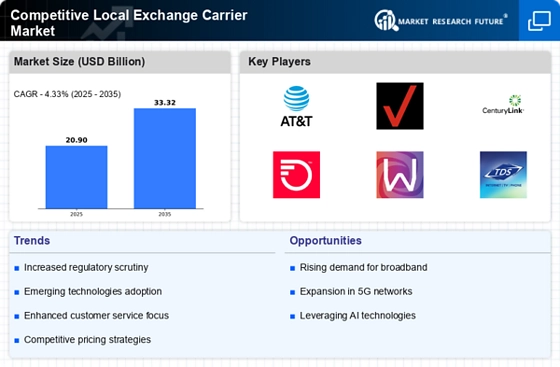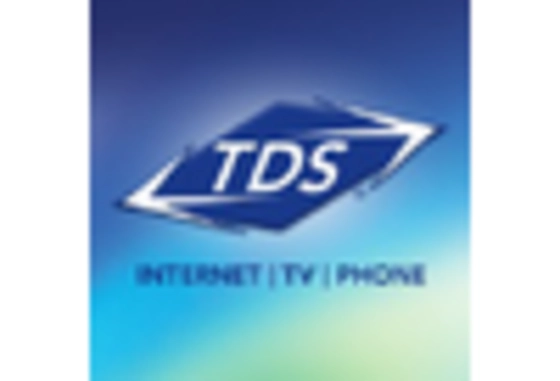The Competitive Local Exchange Carrier Market is characterized by a dynamic interplay of innovation, strategic partnerships, and regional expansion, which collectively drive growth. Key players such as AT&T (US), Verizon (US), and CenturyLink (US) are at the forefront of this competitive landscape. AT&T (US) has focused on enhancing its fiber-optic network, aiming to provide high-speed internet access to underserved areas, thereby positioning itself as a leader in digital transformation. Verizon (US), on the other hand, has been investing heavily in 5G technology, which not only enhances mobile connectivity but also supports the development of smart cities and IoT applications. CenturyLink (US) has adopted a strategy centered around mergers and acquisitions, seeking to consolidate its market position and expand its service offerings, particularly in cloud solutions and managed services. These strategies collectively shape a competitive environment that emphasizes technological advancement and customer-centric solutions.
In terms of business tactics, companies are increasingly localizing their operations and optimizing supply chains to enhance service delivery and reduce costs. The market structure appears moderately fragmented, with several players vying for market share, yet the influence of major companies remains substantial. This competitive structure allows for a diverse range of services and innovations, catering to varying customer needs across different regions.
In August 2025, AT&T (US) announced a significant investment in expanding its fiber-optic network, aiming to reach an additional 1 million homes by the end of 2026. This strategic move is crucial as it not only enhances AT&T's competitive edge in the broadband market but also addresses the growing demand for high-speed internet, particularly in rural areas. By prioritizing infrastructure development, AT&T positions itself as a key player in bridging the digital divide.
In September 2025, Verizon (US) launched a new initiative focused on integrating AI into its customer service operations. This initiative aims to streamline customer interactions and improve service efficiency. The strategic importance of this move lies in Verizon's commitment to enhancing customer experience through technology, which could potentially lead to increased customer loyalty and retention in a highly competitive market.
In July 2025, CenturyLink (US) completed the acquisition of a regional telecommunications provider, which significantly bolstered its service capabilities in the Midwest. This acquisition is strategically important as it not only expands CenturyLink's customer base but also enhances its ability to offer bundled services, thereby increasing its competitiveness against larger rivals.
As of October 2025, the Competitive Local Exchange Carrier Market is witnessing trends that emphasize digitalization, sustainability, and the integration of advanced technologies such as AI. Strategic alliances among companies are increasingly shaping the landscape, allowing for shared resources and expertise. Looking ahead, competitive differentiation is likely to evolve from traditional price-based competition to a focus on innovation, technological advancements, and supply chain reliability. This shift suggests that companies will need to invest in cutting-edge solutions and sustainable practices to maintain their competitive edge.


















Leave a Comment